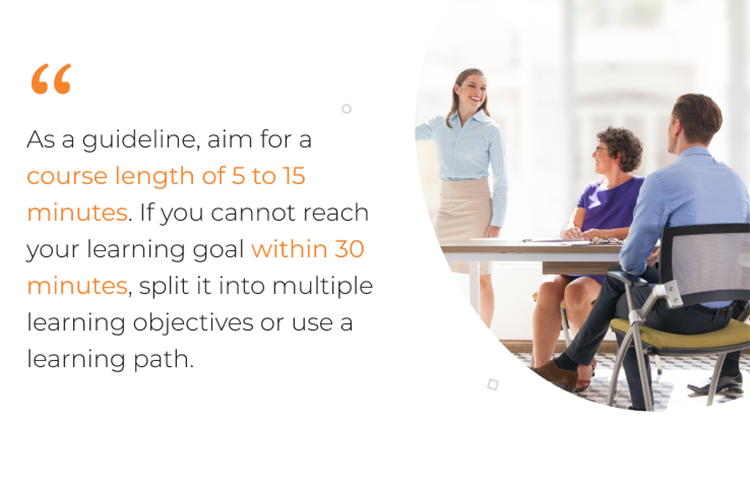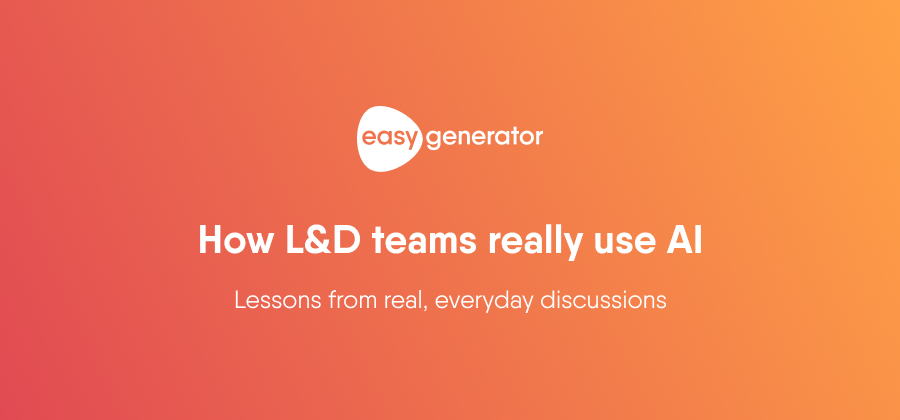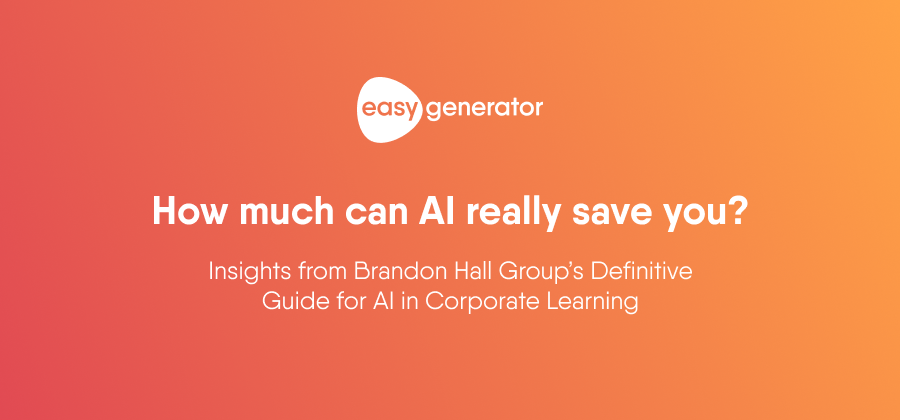The power of microlearning for the pharmaceutical industry
The enormous scope of the pharmaceutical industry creates significant pressures for learning and development (L&D) professionals when designing and rolling-out a broad spectrum of pharmaceutical training courses in the workplace.

Courses might include anything from specific product training to understanding a new set of regulations. These are examples of the ever-changing nature of the industry which, together with the diverse needs of learners, make the delivery of learning objectives more difficult, particularly when using traditional classroom-based methods.
When considering the future, there is a clear need for small curriculum units with targeted learning objectives. Or, in other words, microlearning.
Challenges facing pharmaceutical L&D professionals
The highly competitive nature of the pharmaceutical industry makes it an ever-changing world. For L&D professionals it is vital to be well-informed about new products; as well as keep up with emerging legislation, regulations, and ever-increasing scrutiny. In practice, this often means that what was right this week, may well be wrong the next. This creates a challenge as course content quickly falls out of date and must be amended and refreshed to ensure learners are always well-informed.
L&D professionals are required to meet the training needs of a wide-ranging audience. This can lead to training being delivered in a siloed manner by individual departments, instead of through an organizational-wide learning management system (LMS). Examples of these varying learner needs include:
- Pharmaceutical e-learning for sales, specifically product knowledge,
- HR training, skills and management programs; and,
- Compliance and regulation, both corporate and industry-specific.
Lastly, L&D professionals are usually generalists, not experts. Or, in the case of pharmaceutical e-learning for sales staff, they are trying to impart knowledge to other generalists. This makes content development more difficult, learning objectives harder to define and monitor, and specific experts to work with increasingly challenging to identify.
Microlearning: key principles
Microlearning is much more than a 21st-century training trend. It is the way forward to facilitate skills-based learning. Its key principles center around:
Time and content both are very short, in terms of the actual time to undertake the learning, combined with small units and narrowed topics.

Curriculums should be fragmented into episodes or knowledge nuggets for easier retention.
Learning methods focus on grabbing the learner’s attention through repetitive, pragmatic, and action-based learning activities.
Delivery Media is nearly always e-learning. With the utilization of LMS platforms, and increasingly delivered on mobile devices.
How can microlearning help?
It might seem at first glance that microlearning isn’t right for pharmaceutical courses, given the industry’s complex nature; however, the truth is quite the opposite. Microlearning can be harnessed by L&D professionals to overcome the challenges they currently face.
Microlearning is quick and easy to roll-out
The ever-changing nature of the pharmaceutical industry means companies must utilize training to ensure they remain competitive. Microlearning empowers L&D professionals to develop pharmaceutical courses quickly, as needs dictate. Governments and regulators constantly roll out new standards and guidelines; therefore, L&D professionals using microlearning methods can always ensure their cohorts are well briefed and trained.
A microlearning approach focuses on easy access to courses (usually through an organizational-wide LMS) and high knowledge retention. This is especially ideal when developing pharmaceutical sales training courses. Not only can microlearning be used to deliver the course content through knowledge nuggets, but practical learning methods will allow knowledge to be quickly applied in practice.
Furthermore, in the case of sales staff, the digital and mobile delivery media is ideal, making sure staff are out in the field, rather than stuck in a classroom undertaking long-winded training courses.
Get started with microlearning
Discover the power of microlearning and get expert tips to create engaging, bite-sized content for your learners.
Microlearning is ideal for strategic and targeted training
When working with a wide-ranging audience, microlearning is the ideal method to target the needs of a specific cohort. Whether this is product knowledge for sales staff, corporate performance monitoring for managers, or FDA requirements for corporate governance specialists – microlearning can meet all these training needs.
Using a microlearning approach allows an organizational-wide LMS to be implemented with greater ease. This increases standardization and automation in training, prevents training from being delivered in a siloed manner, and reduces overall costs through the creation of smaller, focused, and more efficient L&D teams. In this context, course content is quickly updated and amended, for example in different languages – especially important for large multi-national pharmaceutical companies.
Microlearning facilitates continuous improvement
As already discussed, L&D professionals in the pharmaceutical industry are not experts. However, the use of a microlearning approach facilitates easier formation and identification of learning objectives. Short training delivery times and bite-sized curriculums allow content development to be streamlined, with easier identification of experts.
A microlearning approach makes monitoring learning objectives easier; therefore, L&D professionals can clearly see where things have been successful and where improvements are needed. This combined with the speed and ease of roll-out, creates a cleaner and much more succinct feedback loop. Outcomes are constantly monitored, and continuous improvements form a key cornerstone of the training delivery process.
Summary
A microlearning approach has the power to achieve significant and lasting changes for e-learning in the pharmaceutical industry. Not only can it tackle current challenges, but it also empowers L&D professionals to innovate, educate and respond to the rapidly changing and varying demands of the industry.


